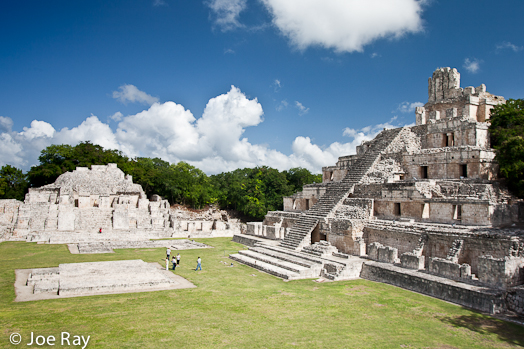Lost In The Jungle
Go Magazine - February 2012 - Story by Elisabeth Eaves, Photos by Joe Ray

BY ELISABETH EAVES — The sun has set since we entered the jungle, leaving us in total blackness except for the beam of light from José‘s head lamp, which bobs over vines and trees. As we ascend a rise, I notice square stones emerging from the black ground around us, stacked into low, uneven walls.
“What’s this?” I ask José, our teenage guide, who we rustled up from the nearest village. “A Maya structure,” he says, without breaking stride.
“Does it have a name?” I ask. “No,” he says. It doesn’t.
When we climb another rise where tree roots embrace tumbleddown walls, I ask again. Also Maya, he says, also nameless. José knows his birds and beasts, and he finds the jungle so peaceful that he spends weeks at a time camping out. No surprise, then, that he’s much more interested in showing us a small cane toad, which he stoops to capture from a puddle. He holds it in the light so that we can see its yellowish skin and blinking eyes. When threatened, cane toads excrete a toxin from certain glands, which some historians think the Mayas used as a hallucinogen, consuming it by licking the skin.
The presence of semiintact buildings more than 1,200 years old, barely buried just a couple of miles from his home, is humdrum to José.
Around here, the signs of ancient Maya civilization are everywhere, rising like ghosts from the ground…
Read more here in Go Magazine.